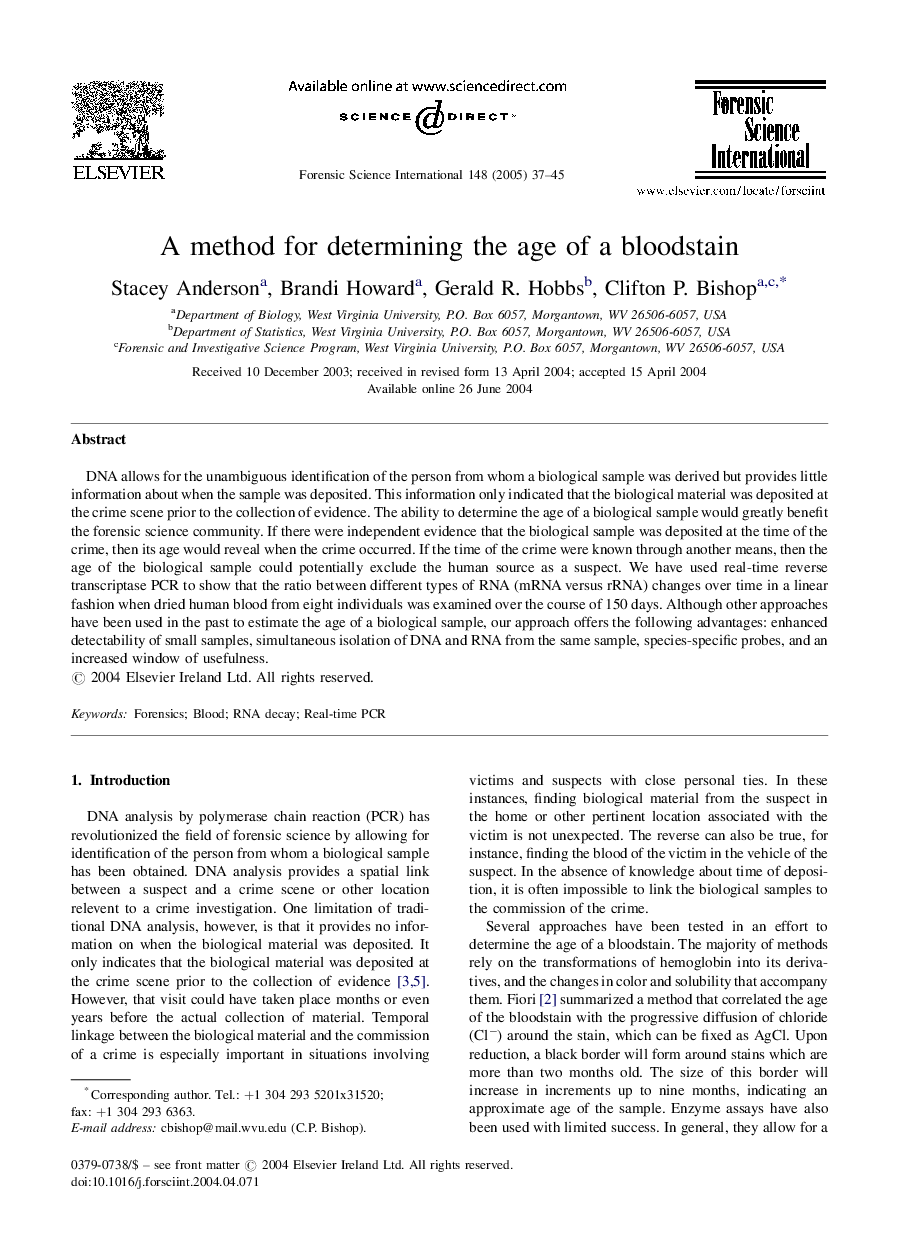| Article ID | Journal | Published Year | Pages | File Type |
|---|---|---|---|---|
| 10252898 | Forensic Science International | 2005 | 9 Pages |
Abstract
DNA allows for the unambiguous identification of the person from whom a biological sample was derived but provides little information about when the sample was deposited. This information only indicated that the biological material was deposited at the crime scene prior to the collection of evidence. The ability to determine the age of a biological sample would greatly benefit the forensic science community. If there were independent evidence that the biological sample was deposited at the time of the crime, then its age would reveal when the crime occurred. If the time of the crime were known through another means, then the age of the biological sample could potentially exclude the human source as a suspect. We have used real-time reverse transcriptase PCR to show that the ratio between different types of RNA (mRNA versus rRNA) changes over time in a linear fashion when dried human blood from eight individuals was examined over the course of 150 days. Although other approaches have been used in the past to estimate the age of a biological sample, our approach offers the following advantages: enhanced detectability of small samples, simultaneous isolation of DNA and RNA from the same sample, species-specific probes, and an increased window of usefulness.
Keywords
Related Topics
Physical Sciences and Engineering
Chemistry
Analytical Chemistry
Authors
Stacey Anderson, Brandi Howard, Gerald R. Hobbs, Clifton P. Bishop,
